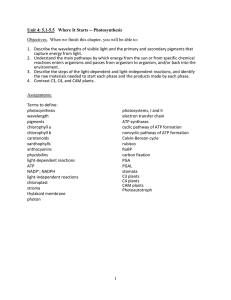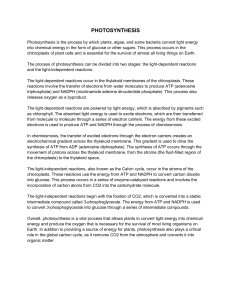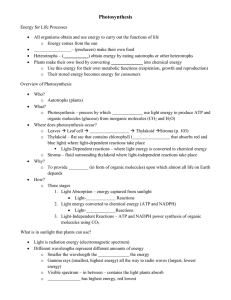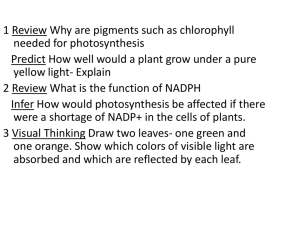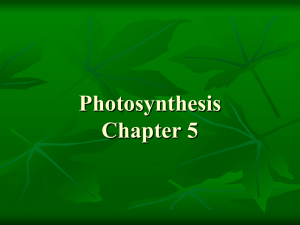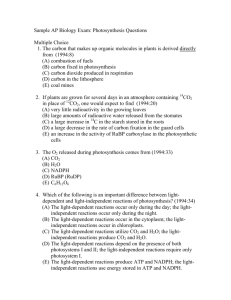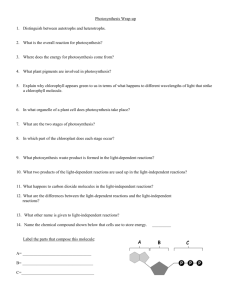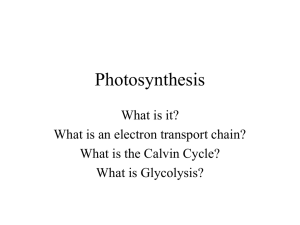Photosynthesis - Defiance City Schools
advertisement
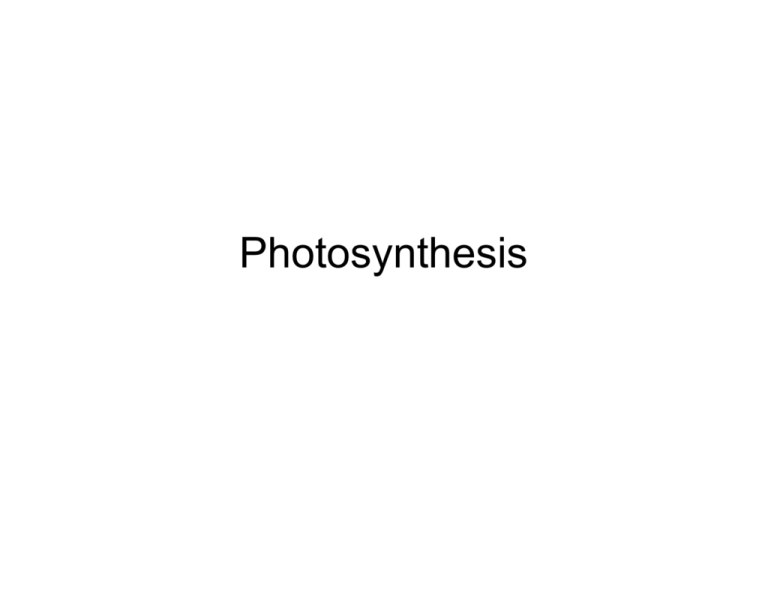
Photosynthesis • Photosynthesis is the process of converting carbon dioxide, water and light energy into oxygen and high energy sugar molecules. • Plants, algae, and some bacteria can use sugar molecules produced during photosynthesis to make complex carbohydrates such as starch or cellulose for food. • The process of photosynthesis consists of two basic stages: light-dependent reactions and lightindependent reactions. • The light-independent reactions are also called the Calvin cycle. • Photosynthesis takes place inside an organelle called a chloroplast. • The chloroplast is an organelle with a double membrane that contains stack of sac-like membranes called thylakoids. • The thylakoid membrane contains within itself a green pigment called chlorophyll. • Pigments are substances that absorb light. • Light-dependent reactions take place inside the thylakoid membrane. • Light-independent reactions take place in the stroma, which is the region outside the thylakoid membrane. • In the light-dependent phase, sunlight hits the leaf of the plant where it is absorbed by the pigments in the leaf. • There are several pigments in plant leaves, but the main one used in photosynthesis is chlorophyll, the green pigment. • Chlorophyll is stored in the chloroplasts of the plant cell. • When light hits the chlorophyll, electrons absorb the energy, become excited, and leave the chlorophyll molecule. • Carrier molecules transport the electrons, which follow an electron transport chain. • Electron acceptor molecules pick up the electrons in a series and pass them from one molecule to another. • As this occurs, energy is released, and ATP is formed. • The final electron acceptor is NADP+. • Splitting a molecule of water replaces the electrons released from the chlorophyll. • These electrons, now available, combine with the NADP+ to form NADPH. • The next stage of photosynthesis uses the NADPH, while oxygen leaves as an end product of the reaction. • The end products of the light-dependent reactions are ATP, oxygen, and NADPH. • The ATP and NADPH will be used in the lightindependent reactions, and the oxygen will be released into the atmosphere. • The next phase, the light-independent or carbon fixation reactions, used the ATP formed during the light-dependent reaction as an energy source. • In this phase, carbon from carbon dioxide, and NADPH are used to form glucose. • To accomplish this, a five-carbon sugar uses a carbon atom from carbon dioxide to create a six-carbon sugar. • Glucose is the end result, after several conversions have taken place. • The glucose can then be used as food to enter cellular respiration, or it can be converted to other carbohydrate products such as sucrose or starch.
